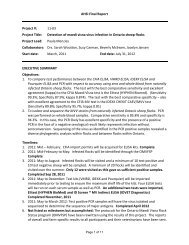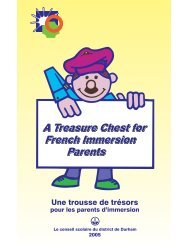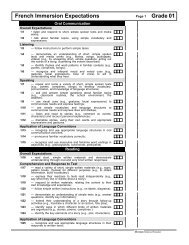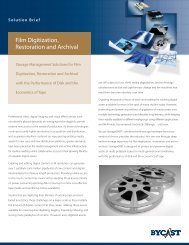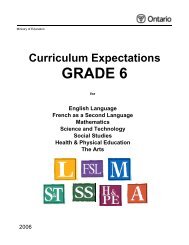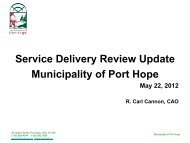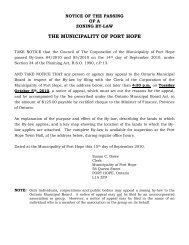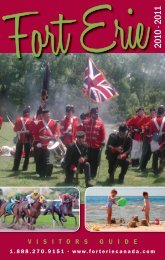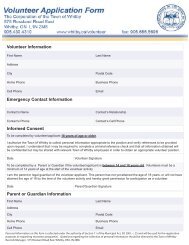GRADE 3 - PVNC Catholic District School Board
GRADE 3 - PVNC Catholic District School Board
GRADE 3 - PVNC Catholic District School Board
Create successful ePaper yourself
Turn your PDF publications into a flip-book with our unique Google optimized e-Paper software.
Mathematics Expectations Page 1<br />
Problem Solving<br />
Mathematical Process Expectations<br />
3m1 • apply developing problem-solving strategies as they pose and solve<br />
problems and conduct investigations, to help deepen their mathematical<br />
understanding;<br />
Reasoning And Proving<br />
3m2 • apply developing reasoning skills (e.g., pattern recognition, classification) to<br />
make and investigate conjectures (e.g., through discussion with others);<br />
Reflecting<br />
3m3<br />
• demonstrate that they are reflecting on and monitoring their thinking to help<br />
clarify their understanding as they complete an investigation or solve a<br />
problem (e.g., by explaining to others why they think their solution is correct);<br />
Grade 03<br />
Selecting Tools and Computational Strategies<br />
3m4 • select and use a variety of concrete, visual, and electronic learning tools<br />
and appropriate computational strategies to investigate mathematical ideas<br />
and to solve problems;<br />
Connecting<br />
3m5 • make connections among simple mathematical concepts and procedures,<br />
and relate mathematical ideas to situations drawn from everyday contexts;<br />
Representing<br />
3m6 • create basic representations of simple mathematical ideas (e.g., using<br />
concrete materials; physical actions, such as hopping or clapping; pictures;<br />
numbers; diagrams; invented symbols), make connections among them,<br />
and apply them to solve problems;<br />
Communicating<br />
3m7 • communicate mathematical thinking orally, visually, and in writing, using<br />
everyday language, a developing mathematical vocabulary, and a variety of<br />
representations.<br />
Number Sense and Numeration<br />
Overall Expectations<br />
3m8 • read, represent, compare, and order whole numbers to 1000, and use<br />
concrete materials to represent fractions and money amounts to $10;<br />
3m9 • demonstrate an understanding of magnitude by counting forward and<br />
backwards by various numbers and from various starting points;<br />
3m10 • solve problems involving the addition and subtraction of single- and<br />
multi-digit whole numbers, using a variety of strategies, and demonstrate an<br />
understanding of multiplication and division.<br />
Quantity Relationships<br />
3m11 – represent, compare, and order whole numbers to 1000, using a variety of<br />
tools (e.g., base ten materials or drawings of them, number lines with<br />
increments of 100 or other appropriate amounts);<br />
3m12 – read and print in words whole numbers to one hundred, using meaningful<br />
contexts (e.g., books, speed limit signs);<br />
3m13 – identify and represent the value of a digit in a number according to its<br />
position in the number (e.g., use base ten materials to show that the 3 in<br />
324 represents 3 hundreds);<br />
3m14 – compose and decompose three-digit numbers into hundreds, tens, and<br />
ones in a variety of ways, using concrete materials (e.g., use base ten<br />
materials to decompose 327 into 3 hundreds, 2 tens, and 7 ones, or into 2<br />
hundreds, 12 tens, and 7 ones);<br />
3m15 – round two-digit numbers to the nearest ten, in problems arising from<br />
real-life situations;<br />
3m16 – represent and explain, using concrete materials, the relationship among<br />
the numbers 1, 10, 100, and 1000, (e.g., use base ten materials to represent<br />
the relationship between a decade and a century, or a century and a<br />
millennium);<br />
Ministry of Education



